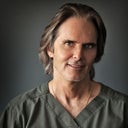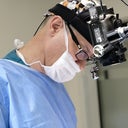I'm happy with my nose when looking at it straight on - But I hate how much it protrudes outward in my side profile. It makes me look super unbalanced (coupled with my lack of jawline) Would a tip rhinoplasty be better based off of my images? I included the image of me squeezing my nose to show how flimsy/bendable it is at the tip of my nose and am curious if that would make the procedure more difficult? Also - does just focusing on the tip of the nose bring the cost of the procedure up or down?
Answers (15)
From board-certified doctors and trusted medical professionals
Dr. Thomas Trevisani, MD

Dr. Thomas Trevisani, MD
Board Certified Plastic Surgeon
Answer
Dr. Eric M. Joseph, MD

Dr. Eric M. Joseph, MD
Board Certified Facial Plastic Surgeon
Answer
Dr. Oakley Smith, MD, FRCSC

Dr. Oakley Smith, MD, FRCSC
Certified Facial Plastic Surgeon
Answer
Dr. Lucian Ion, FRCS

Dr. Lucian Ion, FRCS
Specialist Registered Plastic Surgeon
Answer
Dr. Ramin Behmand, MD, FACS

Dr. Ramin Behmand, MD, FACS
Board Certified Plastic Surgeon
Answer
Dr. Gary M. Horndeski, MD

Dr. Gary M. Horndeski, MD
Board Certified Plastic Surgeon
Answer
More Rhinoplasty Questions
See all Rhinoplasty Q&AWE SEND PRETTY
EMAILS
What’s trending? Who’s turning heads? Which TikTok myths need busting? We’ve got you. No fluff, no gatekeeping—just real talk. Get our free, unfiltered newsletter.



